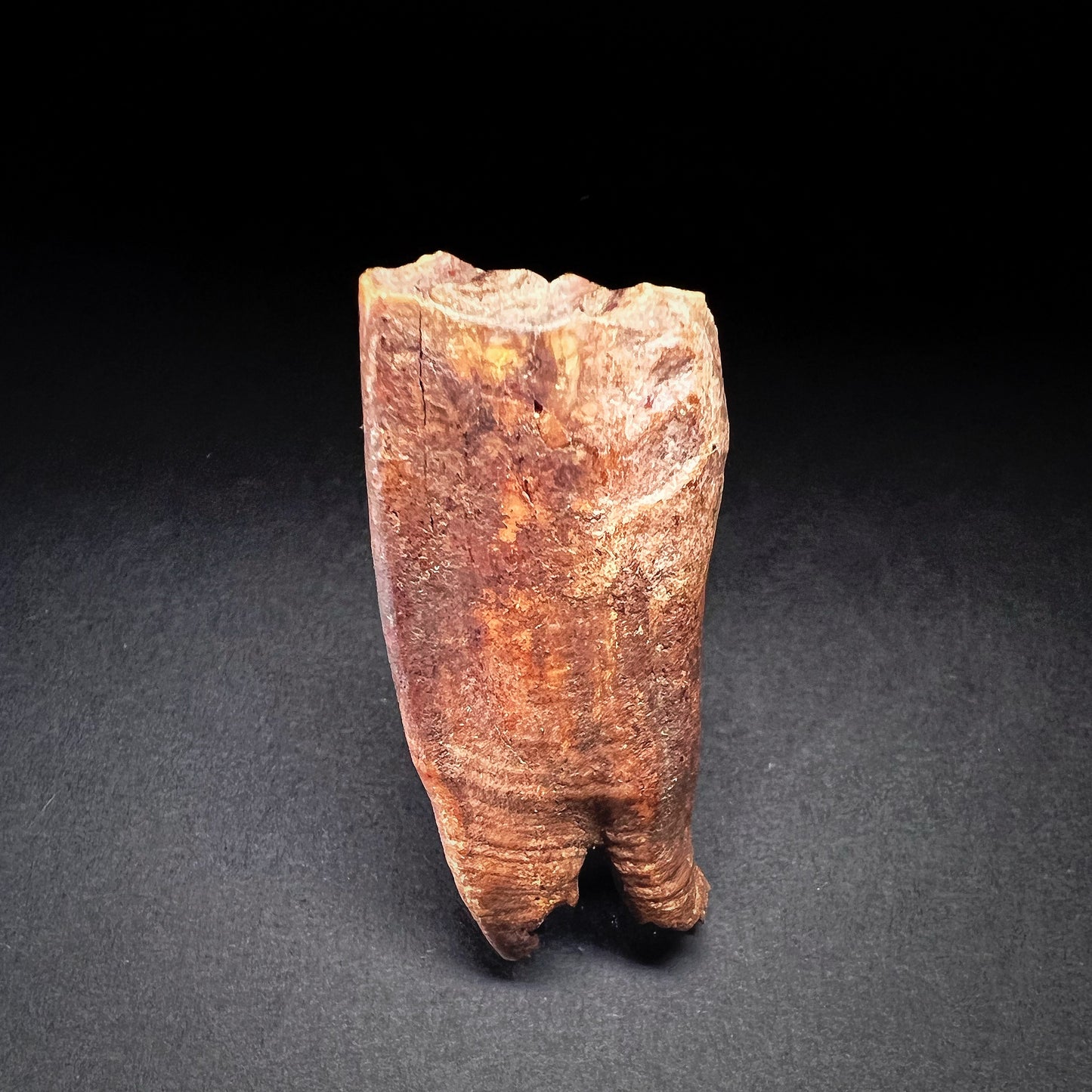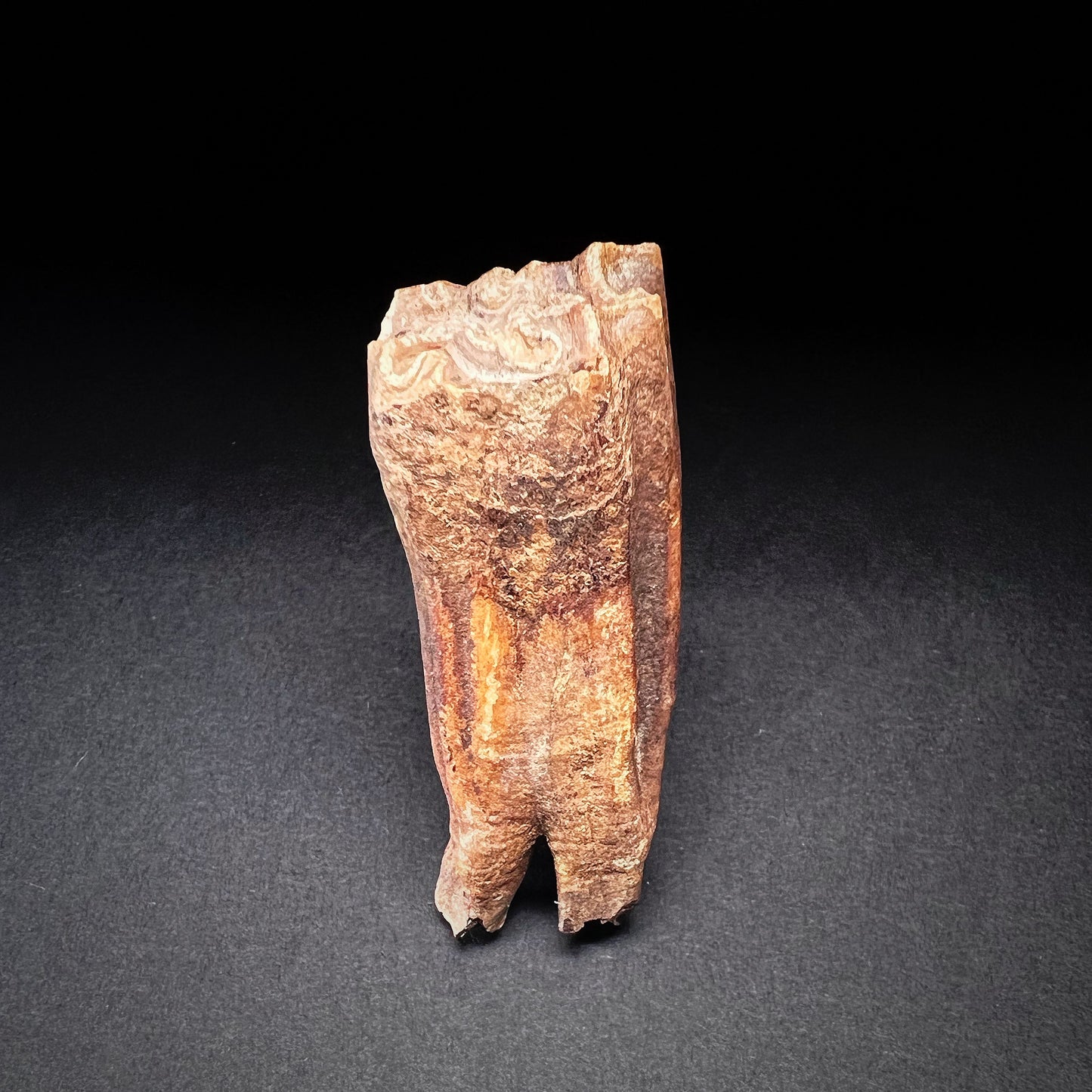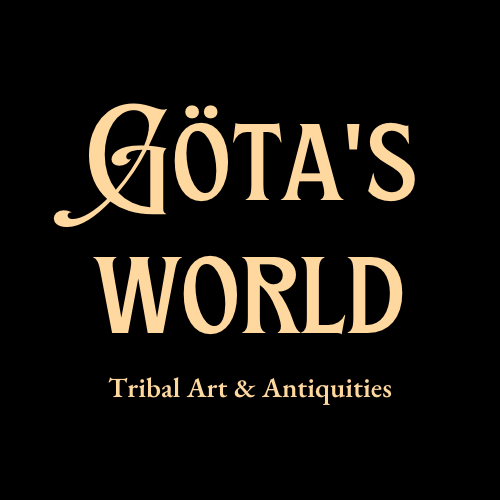Danish Mesolithic Period Mammal Tooth
Danish Mesolithic Period Mammal Tooth
Couldn't load pickup availability
Maglemosian Culture, c. 9000–5000 BC, Zealand, Denmark
A beautifully preserved molar from an elk or aurochs, discovered in the rich peat bogs of Denmark. This compelling piece dates back to the Maglemosian culture, one of Northern Europe’s earliest Mesolithic societies.
These early forest-dwelling peoples thrived in wetland environments, relying heavily on hunting, fishing, and foraging. Large mammals like aurochs and elk were essential for survival—providing meat, materials for tools, and even ritual objects.
This ancient tooth is a tangible connection to that world—a rare and authentic artifact from a vanished culture, ideal for collectors of prehistoric material and early human craftsmanship.
Good condition. Age-related wear, chip and fractures. Traces of peat bog. Lovely dark brown patina. Fragment is treated with a surface-protecting beeswax layer. Size approx. 5,9cm x 2,4cm x 2,5cm.
Provenance: Danish private collection.
References and further reading:
Prehistoric period (until 1050 AD)/ The Mesolithic period, Nationalmuseet i København (https://en.natmus.dk/historical-knowledge/denmark/prehistoric-period-until-1050-ad/the-mesolithic-period/)
Early Maglemosian culture in the Preboreal landscape: Archaeology and vegetation from the earliest Mesolithic site in Denmark at Lundby Mose, Sjælland, Catherine A. Jessen, Kristoffer Buck Pedersen, Charlie Christensen, Jesper Olsen, Morten Fischer Mortensen & Keld Møller Hansen, Quaternary International. 378, 2015, pp. 73–87. (https://doi.org/10.1016/j.quaint.2014.03.056)
Med bue, pil og fiskespyd, Danmarks Oldtid, Jørgen Jensen, Gyldendals Open Encyclopedia (https://danmarksoldtid.lex.dk/Med_bue,_pil_og_fiskespyd)


-
Shipping
The shipment will be prepared in the course of 3-5 days and dispatched via Posti Group Oyj or purchased item(s) can be picked up from our shop during the store's opening hours (Tarkk’ampujankatu 4, 00140, Helsinki, Finland). Within the Finland, all items are shipped via Posti Group Oyj unless otherwise requested. We pack the items carefully and mainly in recycled materials because we want to save nature. You will receive the tracking number for your items by e-mail.
-
Returns
Returns and exchange will be accepted within fourteen days (14) of receipt at the purchaser’s cost to include freight and packaging. Items must be returned in the same condition as when they were shipped, and will not be accepted if damaged or altered in any way. Please inform us via email (info@gotanmaailma.fi) or by calling +358408408352 before sending. We do not accept returns more than 14 days after delivery.


